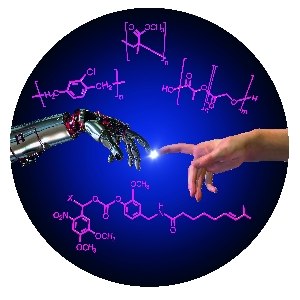By Alton Parrish.

(Figure: KIT/S. Giselbrecht, R. Meyer, B. Rapp)
They are known from science fiction novels and films – technically modified organisms with extraordinary skills, so-called cyborgs. This name originates from the English term “cybernetic organism”. In fact, cyborgs that combine technical systems with living organisms are already reality.
In recent years, medical implants based on smart materials that automatically react to changing conditions, computer-supported design and fabrication based on magnetic resonance tomography datasets or surface modifications for improved tissue integration allowed major progress to be achieved. For successful tissue integration and the prevention of inflammation reactions, special surface coatings were developed also by the KIT under e.g. the multidisciplinary Helmholtz program “BioInterfaces”.
Progress in microelectronics and semiconductor technology has been the basis of electronic implantscontrolling, restoring or improving the functions of the human body, such as cardiac pacemakers, retinaimplants, hearing implants, or implants for deep brain stimulation in pain or Parkinson therapies.
BMI are often considered data suppliers. However, they can also be used to feed signals into the brain, which is a highly controversial issue from the ethical point of view. “Implanted BMI that feed signals into nerves, muscles or directly into the brain are already used on a routine basis, e.g. in cardiac pacemakers or implantsfor deep brain stimulation,” Professor Christof M. Niemeyer, KIT, explains. “But these signals are neither planned to be used nor suited to control the entire organism – brains of most living organisms are far too complex.”
Brains of lower organisms, such as insects, are less complex. As soon as a signal is coupled in, a certain movement program, such as running or flying, is started. So-called biobots, i.e. large insects with implanted electronic and microfluidic control units, are used in a new generation of tools, such as small flying objects for monitoring and rescue missions. In addition, they are applied as model systems in neurosciences in order to understand basic relationships.
Electrically active medical implants that are used for longer terms depend on reliable power supply. Presently, scientists are working on methods to use the patient body’s own thermal, kinetic, electric or chemical energy.
In their review the KIT researchers sum up that developments combining technical devices with organisms have a fascinating potential. They may considerably improve the quality of life of many people in the medical sector in particular. However, ethical and social aspects always have to be taken into account.
“Angewandte Chemie” (applied chemistry) is the most important journal for chemical research worldwide. The first issue was published 125 years ago. The review of the KIT scientists on cyborgs is the cover story of the final issue of the anniversary volume.


